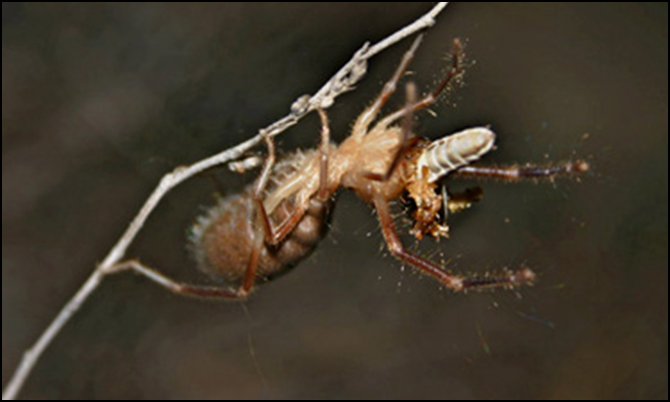Hunting Behavior
[This section contributed by Dr. Robert A. Wharton and Kristie Reddick, Department of Entomology, Texas A&M University]
Most solifuges are agile, cursorial predators capable of covering considerable distances in search of food. They have frequently been recorded foraging on open ground in sparsely vegetated arid regions, but are quite capable of climbing vegetation in grasslands and scrublands. Rapid, seemingly random, locomotory activity is generally considered to be the normal searching strategy (Muma 1966, Wharton 1987, Punzo 1998), though there are obvious exceptions for certain termitophilous species (Lawrence 1963, Muma 1966). Several observations suggest that some species at least occasionally stalk their prey (Cloudsley-Thompson 1977) and the short-legged mole solifuges of the family Hexisopodidae from western southern Africa, though occasionally found on the surface, probably forage beneath the surface of their sandy substrate. Some of the earliest observations (e. g. Pocock 1897) suggest that tactile stimuli are important in prey location and capture. More recent studies have verified the importance of tactile stimuli (Bolwig 1952, Muma 1966) and visual stimuli (Muma 1966). There is also some suggestion that they can detect substrate-borne vibrations (Wharton 1987). Extensive work has been done on the structure of the malleoli, the unique rachet organs on the legs of solifuges. While the function is still not entirely clear, they are believed to have chemosensory properties (Brownell and Farley, 1974), and may therefore be used in prey detection. Punzo (1998) provides a good summary of previous work on Hunting Behavior.

Galeodes caspius subfuscus, immature, with prey (unidentified insect), Malaisary Mt. foothills, Almaty area, Kazakhstan. (Photo by Alexander V. Gromov).
